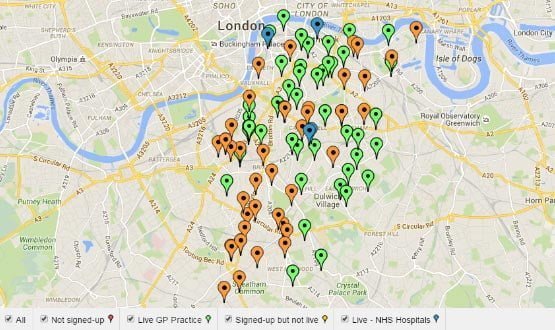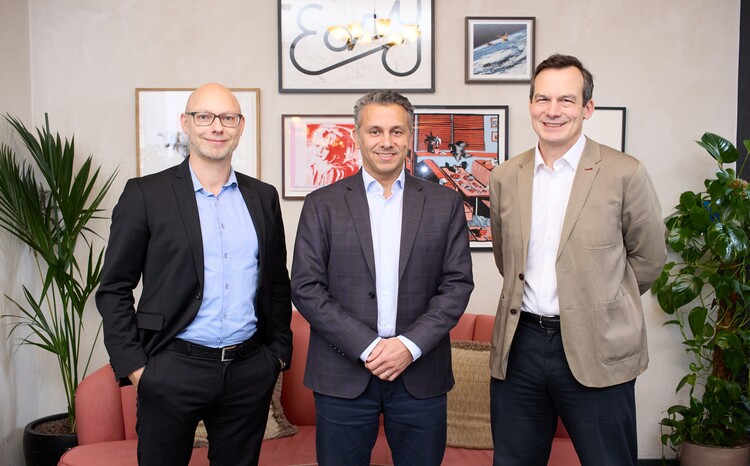Doing the Lambeth Wark: Local Record Project reaches GPs
- 31 March 2016

A shared record scheme that has recently been extended from three London acute trusts to more than 90 GPs in Southwark and Lambeth started life as a Skunkworks project.
Gary McAllister, chief technology officer at Guy's and St Thomas' NHS Foundation Trust and Jack Barker, chief clinical information officer at King’s College Hospital NHS Foundation Trust, invented the Skunkworks programme, which they called King’s Health Partners Online.
The initiative was to “test the concept of applying modern web interoperability techniques across King’s Health Partners’ trusts to deliver an information sharing portal”, McAllister explains.
They raised £150,000 funding to support a proof of concept in 2013 and created a rough version of KHP Online to prove that it works.
An injection of £500,000 from the ‘Safer Hospitals Safer Wards: Technology Fund’ to “productionise the project” allowed their in-house development team to build a scalable federated platform over the course of 2014.
Linking three trusts
The portal links CSC’s iSoft-era iPatient Manager and iClinical Manager systems, in use at King’s and Guy’s, to Advanced Health and Care’s CareNotes system, which is used by South London and Maudsley NHS Foundation Trust and local community services.
The portal been fully live across the three trusts since November 2014. It also pulls in data from oncology and picture archiving and communications systems and from a document platform, so users access to each other’s radiology and X-ray images and clinic letters, among other things.
The shared record project quickly picked up steam and KHP Online now has 7,000 unique patient views a month across 17,000 unique users. Single sign-on means users can access the portal from within their own EPR; and this is contributing to a 5% increase in adoption every month.
Bringing in primary care
The next step was to look at primary care integration, for which the team got a timely injection of £1 million from the South London Integrated Care programme. Their first port of call was GP system supplier Emis, which was in the process of developing an integration SD Kit to allow systems to integrate directly with its software on the GP desktop.
The Local Care Record became the first patient information sharing system in the UK to receive an official accreditation under this scheme. Southwark and Lambeth GPs now have an embedded button within Emis Web to access KHP Online, that is accredited by their system provider.
The integration with primary care also uses Healthcare Gateway’s Medical Interoperability Gateway to present GP information to acute users. GPs have agreed on nine views of data, including the problem list, medications, diagnoses and procedures.
More than 50 practices have enabled viewing of their records within the King’s Health Partners portal and 21 are able to view the portal information from within their Emis systems. With 91 registered to become users, roll-out is expected to be complete by the summer.
Access to the Local Care Record is via patient consent at the point of care. Patients can also explicitly opt out of the shared record scheme, but only 28 patients, representing 0.015% of the population, have chosen to do this to date. The information is clearly useful as, in the first month of use, GPs viewed these shared records 2,000 times.
A GP view
Dr Adrian McLachlan is a partner at the Hetherington Group Practice, which was the first to go-live with the Local Care Record in early January this year.
He describes how one of his early encounters with the shared record involved a patient with a history of mental health problems, which made the link from South London and Maudsley particularly useful.
He was able to recommend a change in treatment and to track the impact of that via clinical notes inputted by a home treatment team and made available in real-time in the portal.
McLachlan, who is also chair of NHS Lambeth Clinical Commissioning Group, tells Digital Health News that information sharing for frontline care is something most patients assume is being done already and there are compelling clinical use cases for it, such as medicines reconciliation between different parts of the healthcare system.
The most challenging thing for the Local Care Record team was the creation of robust data sharing agreements, which a group of interested GPs and information governance leads worked on for a couple of years.
GPs already had agreements in place for enhanced patient profiling and analytics, so the concept was not entirely new. In fact, getting GPs to sign up to Local Care Record was an easier job in some ways, as the benefit to patients and clinicians was more obvious and immediate.
Changing with the times
McLachlan has already had experience of being able to look at a patient’s discharge summary or clinic letter via the portal before it has arrived at the practice. Letting patients know the date of their next hospital appointment has also been hugely helpful.
Being able to check results saves much time and resource that would otherwise be spent on trying to track down this information from the hospital – or in some cases having to order the same tests to be done again, he adds.
“I look [at the Local Care Record] very frequently. I was in surgery all day yesterday and would have looked ten to 20 times, so it’s a big change in my working life. It saves my time and the patient’s time and the safety and quality of care is improved.”
Eventually, McLachlan believes discharge summaries and clinic letters could be made available only via the portal, with a flag attached to a record if there is something new to read, and their information otherwise seamlessly embedded into the record.
Users do not yet have a view into community or social care, but the aim is to link into these services eventually.
Another longer-term aim is to start sharing structured coded data, which would make the two-way travel of things such as discharge summaries and referrals much simpler for both sides.
“It has been what has felt, at times, quite a long process, but one we have managed well; engaging all the stakeholders on the journey. It is now delivering something of real and immediate benefit for patients and clinicians and is rolling out at speed,” McLachlan says.
“There’s a sense of local ownership. It’s something we have wanted to do ourselves and have done ourselves.”




